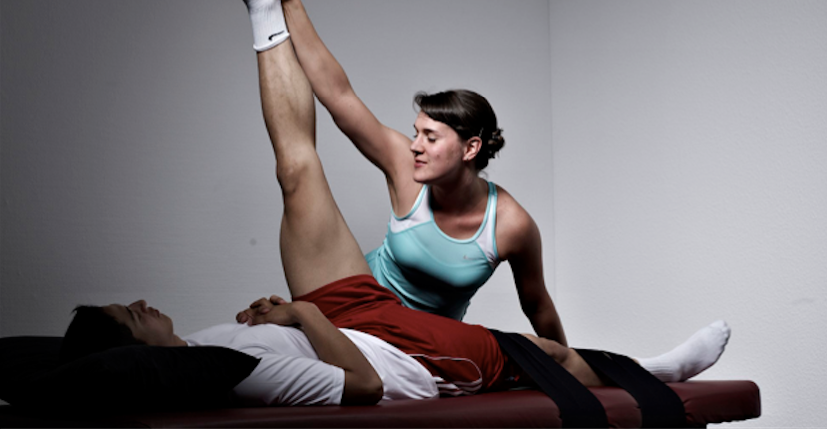Mobility has become a trendy term over the last few years. There are many ways to improve mobility, and many of these so-called mobility drills and stretches work. I recommend some classics like the 90/90 stretch or a rectus femoris stretch for my work. Just watch the videos on my YouTube channel to learn them.
There are now many tools to improve mobility such as foam rollers and fascia tools. The tool I developed and use most of the time isthe YPSI Tool . It's small and handy, easy to use, and brings fast, efficient advances in mobility improvement.
Mobility drills, stretches and tools are excellent and we all use them at YPSI. It is crucial, however, that the methods must be selected based on the individual limitations of the trainee in order to have a positive effect on them. Some limitations are statistically very common. These include restricted ankle dorsiflexion, a tight psoas, rectus femoris, piriformis, or adductors. However, what applies to the respective trainee must be determined individually through movement analysis, flexibility and stability tests. A general mobility routine will not restore balance. In order to restore a balance, the individually limiting deficits must be adjusted. It's like a unilateral power deficit: if you make both sides stronger, the deficit will only be raised to a higher level. The aim must be to improve the weakest link in the chain in order to strengthen the whole chain. The same goes for stretching. Stretch and strengthen what is tight - because tight is usually weak. You will learn the tests, movement analyses, assessments & screenings that we use in the YPSI in Module 5 of the YPSI Trainer Certification .
Mobility drills are often used not only to improve mobility, but also as specific preparation for warming up for an exercise. This can waste a lot of time. Our customers at YPSI our customers rarely use mobility drills, stretches or foam rollers to generally warm up for an exercise. Because strength training is based on specific movement patterns and exercises are precisely defined movement patterns and loads, our customers also warm up specifically for the upcoming movement patterns and loads. For example, for squats, the best way to warm up is to do squats. For the simple reason that no other exercise will prepare your body and nervous system for the squat better than the squat - with gradually increasing loads, of course. The goal is to mobilize the entire range of motion of the exercise and activate the central nervous system (CNS). The cardiovascular component is not critical in strength training and is activated in the warm-up process anyway. It is therefore neither necessary nor useful to do an additional cardiovascular warm-up, for example on a cross trainer. By performing a specific exercise, mobility is primarily improved in those areas that limit the trainer individually. I also go into detail about this in the article “Optimal warm-up for strength training” . Weight training is a loaded stretch in the stretched positions. For example, if the hip flexors - psoas and rectus femoris - aren't limiting the lifter during the squat, but their ankle is a major deficit, the squat won't improve hip flexion like a hip flexor stretch would. Instead, for this lifter, the squat would primarily improve ankle mobility.
Stretching takes over important tasks. Very important tasks. On the one hand, as mentioned above, it is crucial to individualize stretching in order to restore balance. Second, I prefer passive stretching, where someone else stretches you, to active stretching, where you stretch yourself. For two reasons, first, mobility and flexibility gains progress significantly faster and more efficiently since the relaxation factor and greater movement and traction of the joints lead to faster improvements. On the other hand, the likelihood that someone will stretch permanently and sustainably as part of a personal training session or a separate stretching session is much higher than it is if the client is supposed to do the stretching independently. A fact most people know about themselves.
Conclusion:
1. Stretching is important as it is the basis for optimal mobility & flexibility.
2. Stretching improvements are based on an individualized stretching program to restore muscular balance.
3. Passive stretching is preferable to active stretching for efficiency, sustainability, and the comfort factor. Whenever possible.
In order to be able to identify and correct mobility limitations and deficits in oneself or as a trainer with his clients, it is crucial to learn the methods that work in the real world and to apply the methods that lead to the fastest results in terms of optimizing flexibility, mobility and stability. Practical experience and personal correction of technique and execution are decisive for this.
Good luck with improving flexibility, mobility and stability with your individual stretching program!
To create an individualized stretching program, we created the YPSI Fascial Stretching workshop with Katharina Unsöld .
Image: Katharina Unsöld at work as an expert in fascial stretching.

